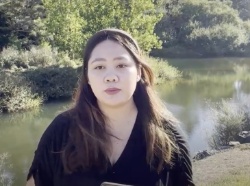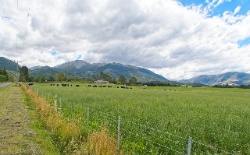Safe Canals Report Ensures Project Aqua Security
Safe Canals Report Ensures Project Aqua Security
Consistent with international practice, Meridian Energy has prepared a report outlining the ways it plans to ensure the safety of the proposed Project Aqua canals.
Meridian Energy spokesman Alan Seay said part of this process involved assessing a range of hypothetical canal breach scenarios, so that effective security measures could be put in place to limit any impact in the unlikely event of a breach.
“The report emphasises from the outset that the risk of a canal breach actually occurring is extremely low. Its purpose is to identify the full range of measures that can be included in the design and construction process to minimise the impact in the unlikely event of a breach occurring,” he said.
“The whole point of the report was to find out where security measures were needed. Now we know where these areas are, we can put these measures in place,” said Mr Seay.
The same process was undertaken with Meridian Energy’s many other hydro-dams and canals, reflecting its commitment to responsible ownership.
Mr Seay said Meridian’s Dam Safety Policy (DSAP) was regularly reviewed to make sure it continued to represent international best practice.
Project Aqua will automatically be incorporated into the DSAP, the effectiveness of which was highlighted during the Fiordland earthquake on August 22.
“A Meridian response team was mobilised within minutes and the Manapouri Power Station and Waitaki chain stations continued to operate without interruption,” said Mr Seay.
“Even the huge loads
generated by the August 22 quake were well within the design
parameters of all of our structures.” Project Aqua is a
proposed hydro-electricity scheme with a 60-kilometre canal,
six hydro power stations, two outfalls and new high-voltage
transmission lines. It would run along the south side of the
lower Waitaki Valley, from an intake at Kurow to an outfall
6 km from the coast. It would generate about 3000 GWh in an
average year and 2000 GWh in a very dry year.


 Citizens of the Sea: Sailors To Revolutionise Our Understanding Of Pacific Biodiversity
Citizens of the Sea: Sailors To Revolutionise Our Understanding Of Pacific Biodiversity Netsafe: Making A Splash With Online Safety: Netsafe Launches New Flagship Programme For Kids
Netsafe: Making A Splash With Online Safety: Netsafe Launches New Flagship Programme For Kids NZGBC: Flood Resilience PhD Student Widi Auliagisni Named Future Thinker Of The Year 2024
NZGBC: Flood Resilience PhD Student Widi Auliagisni Named Future Thinker Of The Year 2024 Business Canterbury: European Free Trade Agreement A Game-changer For Canterbury
Business Canterbury: European Free Trade Agreement A Game-changer For Canterbury Business Canterbury: Urges Council To Cut Costs, Not Ambition For City
Business Canterbury: Urges Council To Cut Costs, Not Ambition For City Wellington Airport: On Track For Net Zero Emissions By 2028
Wellington Airport: On Track For Net Zero Emissions By 2028



